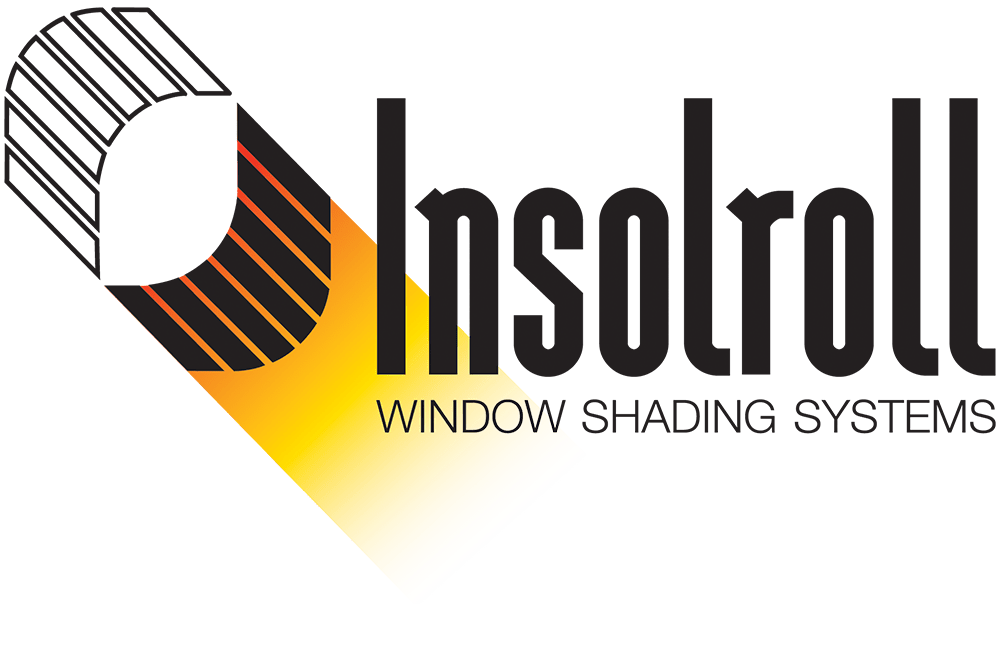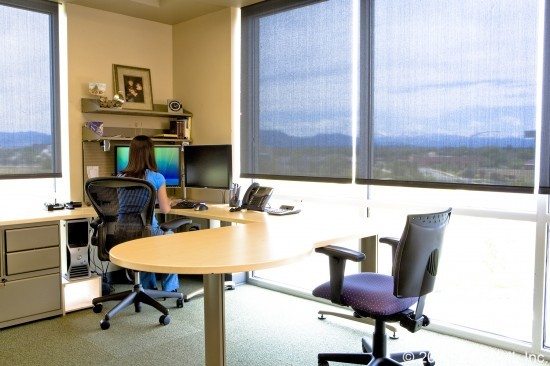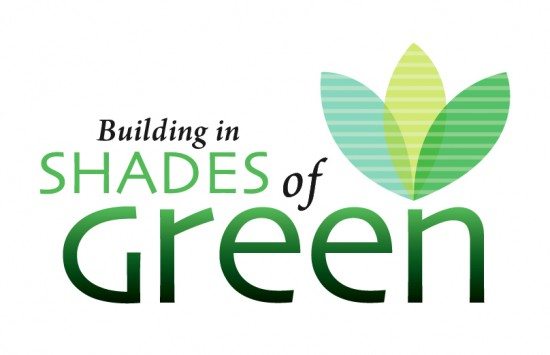
Building in Shades of Green
The “Green Building” movement aims to improve occupant well being, environmental performance, sustainability and economic returns of residential and commercial buildings.
The contribution of Insolroll® Interior Solar Screen and Audio-Visual Shades to “Green Building” projects and as requirement reference items in the Leadership for Energy and Environmental Design (LEED) rating system is evaluated based on both performance and material content.
Performance considerations
Building designs featuring large window areas maximize the availability of natural light and create pleasant, productive work and study environments. The introduction of natural light also decreases the need for fluorescent lighting and invites solar heat gain to assist with winter heating.
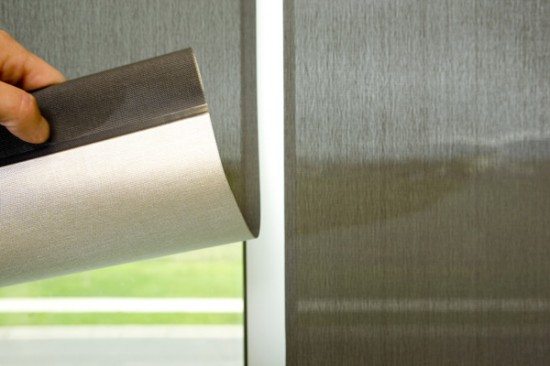 SilverScreen metallized solar screen fabric controls glare and assists in balancing the heat gain/heat loss to optimize occupant comfort and energy efficiency. This fabric features a fine layer of aluminum vacuum-formed to the window-side of a high quality woven shade fabric. SilverScreen is superior to all other shading fabric solutions in its ability to reduce heat and glare while maintaining excellent view and connectivity to the outside world.
SilverScreen metallized solar screen fabric controls glare and assists in balancing the heat gain/heat loss to optimize occupant comfort and energy efficiency. This fabric features a fine layer of aluminum vacuum-formed to the window-side of a high quality woven shade fabric. SilverScreen is superior to all other shading fabric solutions in its ability to reduce heat and glare while maintaining excellent view and connectivity to the outside world.
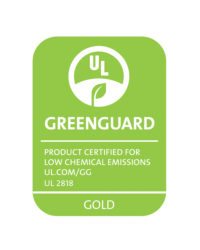 Content considerations
Content considerations
Solar screen fabrics featuring vinyl-coated polyester or fiberglass yarns continue to be dominant in the market. They are time proven, provide excellent shading performance and are recognized for being durable and washable.
Concerns regarding the negative impact of PVC emissions on indoor air quality have been alleviated by the GreenGuard Certification that ensures the highest industry standards are being applied to maintain indoor air quality for the health and safety of building occupants.
For projects demanding PVC-Free shading fabrics, Insolroll provides a variety of solar screen, opaque and decorative options.
For applications in which recycling is a point of emphasis, Insolroll® offers a selection of fabrics that are 100% recyclable.
Insolation, architecture and energy management:
Insolation (INcident SOLar radiATION) where YOU live
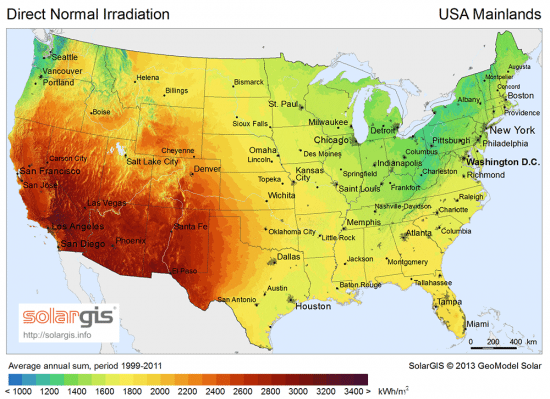
Insolation: a measure of solar radiation energy that strikes a given surface area during a specified period of time.
Due to the path of the sun in the sky over various geographical locations (with different latitudes), different parts of the USA and Canada receive differing amounts of solar radiation throughout the year. The amounts are also affected seasonally, with the sun’s path changing slowly between summer and winter.
Insolation and orientation
Cities at lower latitudes receive higher insolation levels, and therefore have greater cooling concerns, and the orientation of the window (facing North, South, East or West) also significantly affects the amount of heat gain a window will allow.
North facing windows experience the least heat gain, receiving early morning sun and the late afternoon summer sun, which has such a great angle of incidence that most of the radiation is either reflected by the glass or blocked by walls flanking the windows
South facing windows collect solar heat the best during winter, and are easier to shade during the summer
East facing windows lose significant amounts of heat in winter, and seasonal sun path angles cause direct sunshine and allow more heat gain on summer mornings.
West facing windows have the same issues as east facing windows, except that they experience even more heat gain during summer afternoons because they get direct sun during the hottest part of the day.
Solar Screen Shades are particularly effective in passive solar applications, because they allow complete control over how much the shade is lowered during winter to take advantage of winter insolation to warm a building. Users can strike the perfect balance between glare control and increasing or decreasing solar heat gain at windows, whereas other types of window treatments block the view to block the sun.
What makes high performance fabrics so effective?
Windows are struck by solar radiation, as are the shades within. Some of the radiation will be absorbed and the remainder reflected. That absorbed energy is converted to thermal energy, or heat, inside the structure.
High performance solar screen fabrics reflect more of that heat energy and absorb less, therefore decreasing the interior temperature increase. Even dark colors, which are traditionally less effective at reducing heat gain, have excellent thermal protection in high performance fabrics. Light colored High Performance fabrics both reduce heat gain and provide excellent view-through, due to the reflectivity of the metallized exterior of the fabric preventing light from flowing through the fabric itself.
Glare control in low insolation areas
Energy saving is important, but so is comfort. Even areas without high insolation values can have uncomfortable levels of glare. Mid- and high level clouds can cause significant light diffusion and high levels of glare even when the sun isn’t directly visible. Solar Screen Shades again strike the perfect balance, allowing just the right amount of light into an interior space, with complete control over that balance in the hands of the user.
Sustainable Fabrics
![]()
Infinity2 Fabric
Phifer’s Infinity2 Fabric is composed of ThermoPlastic Olefin fibers, and is both made from recycled materials and can be recycled. Both processes occur at the manufacturing facility in Georgia. To recycle Infinity2 fabric, simply return used material to Insolroll and we will deliver it to Phifer for recycling.
GreenScreen Revive Fabric
Mermet’s GreenScreen Revive solar fabric is 100% recyclable, with a minium of 89% Repreve® fibers: 100% post-industrial fiber and consumer plastic waste. Available in 5 colors and both 1% and 5% openness, GreenScreen Revive is Cradle to Cradle Bronze Certified and uses 11 recycled bottles per yard of fabric.
Responsible, ecological choices
As recycling processes advance, reusing more and more types of material become practical and easily accessible. Interest in sustainability is pervasive and growing, and regional recycling centers are developing ways to harvest usable raw materials from an ever increasing list of solar screen content materials. Insolroll is committed to sustainability and protecting our planet, and will continue to strive to provide the most up-to-date information regarding recycling possibilities for all of our fabrics.
LEED® Points of Impact, NC/CS/Sc
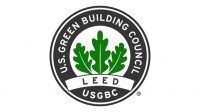
New Construction (NC/Core and Shell (CS), Schools (Sc)
![]()
 Sustainable Sites:
Sustainable Sites:
Credit 8, Light Pollution Reduction (1 point); utilize<10% open fabrics and automated controls on motorized shades to minimize interior light leakage to the outside of the building.
 Energy and Atmosphere:
Energy and Atmosphere:
Prerequisite 1, Fundamental Commissioning of Building Energy Systems (Required): Insolroll Shades and Control Systems are installed as part of the project’s energy-related systems, and calibrated to perform according to the owner’s project requirements, basis of design and construction documents.
Prerequisite 2, Minimum Energy Performance (Required): Incorporate Insolroll Shades and Control Systems into the proposed building energy efficiency, and as part of systems to reduce environmental and economic impacts associated with excessive energy use.
EA Credit 1, Optimize Energy Performance (NC & Schools, 1-19 points, CS, 3-21 points): Utilize Insolroll shades and controls to contribute to achievement of increasing levels of energy performance beyond the prerequisite standard to reduce environmental and economic impacts associated with excessive energy use. Building automation, sun sensors and integrated control of Insolroll shades maximizes the contribution of shades to building energy efficiency, responding to sun levels and automated commands based on insolation, orientation and other environmental factors.
 Materials & Resources
Materials & Resources
MR Credit 4, Recycled Content(10%-1 point, 20%-2 points): Select fabrics such as Infinity2 with recycled content such that the sum of post-consumer recycled content plus 1/2 of the pre-consumer content constitutes at least 10% or 20%, based on cost, of the total value of the materials in the project.
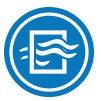 Indoor Environmental Quality
Indoor Environmental Quality
IEQ Credit 6.1, Controllability of systems- Lighting (1 point): Utilize Insolroll shades and controls as part of building lighting control scenario to achieve individual lighting controls for 90%+ of building occupants to enable adjustments to suit individual tasks and preferences. Utilize Insolroll shades and controls as part of building lighting control scenario to provide lighting system controls for all shared multi-occupant spaces to enable adjustments that meet group needs and preferences.
IEQ Credit 6.2, Controllability of Systems- Thermal Comfort (1 point): Utilize Insolroll shades and controls as part of building thermal comfort system control by individual occupants or groups in multi-occupant spaces (e.g. classrooms or conference areas) and promote their productivity, comfort and well-being.
IEQ Credit 8.1, Daylight and Views- Daylight, Option 2 (1 point): Insolroll Solar Screen Shades (including fixed skylight shades) to achieve a total daylighting zone in at least 75% of all the regularly occupied spaces within LEED specified range of 0.15 to 0.18
IEQ Credit 8.2, Daylight and Views- Views (1 point): Utilize Insolroll Solar Screen Shades in building design to provide building occupants a connection to the outdoors through the introduction of daylight and views into the regularly occupied areas of the building.
LEED® Points of Impact, CI

Commercial Interiors (CI)
![]() Energy and Atmosphere:
Energy and Atmosphere:
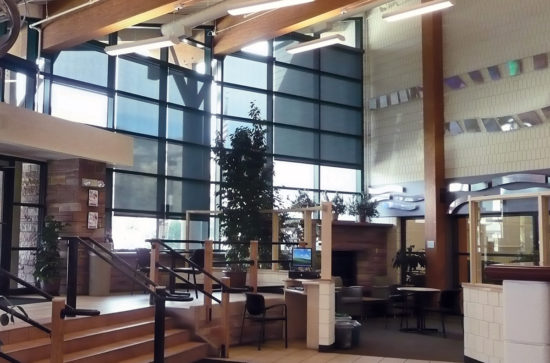 EA Credit 1.1, Optimize Energy Performance (1-5 points): Utilize Insolroll shades and controls (building automation, sensors, etc.) to reduce the energy used for artificial lighting; reduce connected lighting power density below that allowed by ANSI/ASHRAE/IESNA Standard 90.1-2007. Points assigned based on percentage reduction below the standard
EA Credit 1.1, Optimize Energy Performance (1-5 points): Utilize Insolroll shades and controls (building automation, sensors, etc.) to reduce the energy used for artificial lighting; reduce connected lighting power density below that allowed by ANSI/ASHRAE/IESNA Standard 90.1-2007. Points assigned based on percentage reduction below the standard
 Materials & Resources:
Materials & Resources:
MR Credit 4, Recycled Content (10%- 1 point, 20%- 2 points): Utilize Insolroll fabric with recycled material content (e.g. Infinity2) such that the sum of postconsumer recycled content plus 1/2 of the preconsumer content constitutes at least 10% or 20% based on cost of the total value of the materials in the project.
 Indoor Environmental Quality
Indoor Environmental Quality
IEQ Credit 8.1, Daylight and Views- Daylight (1-2 points): Utilize Insolroll Solar Screen Shades to provide occupants with a connection between indoor spaces and the outdoors through the introduction of daylight and views into the regularly occupied areas of the tenant space. Daylighting achieved in 75% of regularly occupied spaces- 1 point; 90% of regularly occupied spaces- 2 points.
IEQ Credit 8.2, Daylight and Views- Views for Seated Spaces (1 point): Utilize Insolroll Solar Screen Shades to provide occupants with a connection between indoor spaces and the outdoors through the introduction of daylight and views into the regularly occupied areas of the tenant space.
Environmental certification standard information
Some of the official certifications/indications our fabrics have earned:

Greenguard®: Indoor Air Quality certification program indicating low emission products and materials; utilizes evaluation for over 75,000 chemicals, which include VOCs (Volatile Organic Compounds), carcinogens and reproductive toxins.
Greenguard Children & Schools®: Certification program that establishes extremely strict chemical emissions standards to accommodate the special needs of children in educational and daycare facilities.
![]()
Microban®: Antimicrobial protection fabric additive inhibits the growth of stand and odor-causing bacteria, mold and mildew for the life of the fabric.
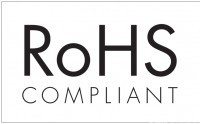
RoHS: Restriction of Hazardous Substances Directive; often referred to as the ‘lead-free directive’, but also restricts the use of:Mercury (Hg), Cadmium (Cd), Hexavalent chromium (Cr6+), Polybrominated biphenyls (PBB and Polybrominated diphenyl ether (PBDE).
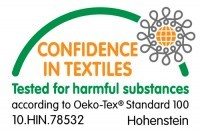
Öko-Tex 100: According to oeko-tex.com, a certification program “based on scientifically proven parameters… revised annually in line with the latest legislation and research”, restricting: Illegal Substances such as carcinogenic colorants, Legally regulated substances such as formaldehyde, plasticizers, heavy metals or pentachlorophenol, substances which according to current knowledge are harmful to health, but which are not yet regulated or prohibited by law such as pesticides, allergenic dyes or tin-organic compounds. The standard also includes parameters such as color fastness and a skin-friendly pH-value, which are precautionary measures to safeguard consumer health.
Most of our fabrics have multiple certifications; please consult our fabric pages for complete technical data and certifications.
Blackout/Room Darkening Fabric
